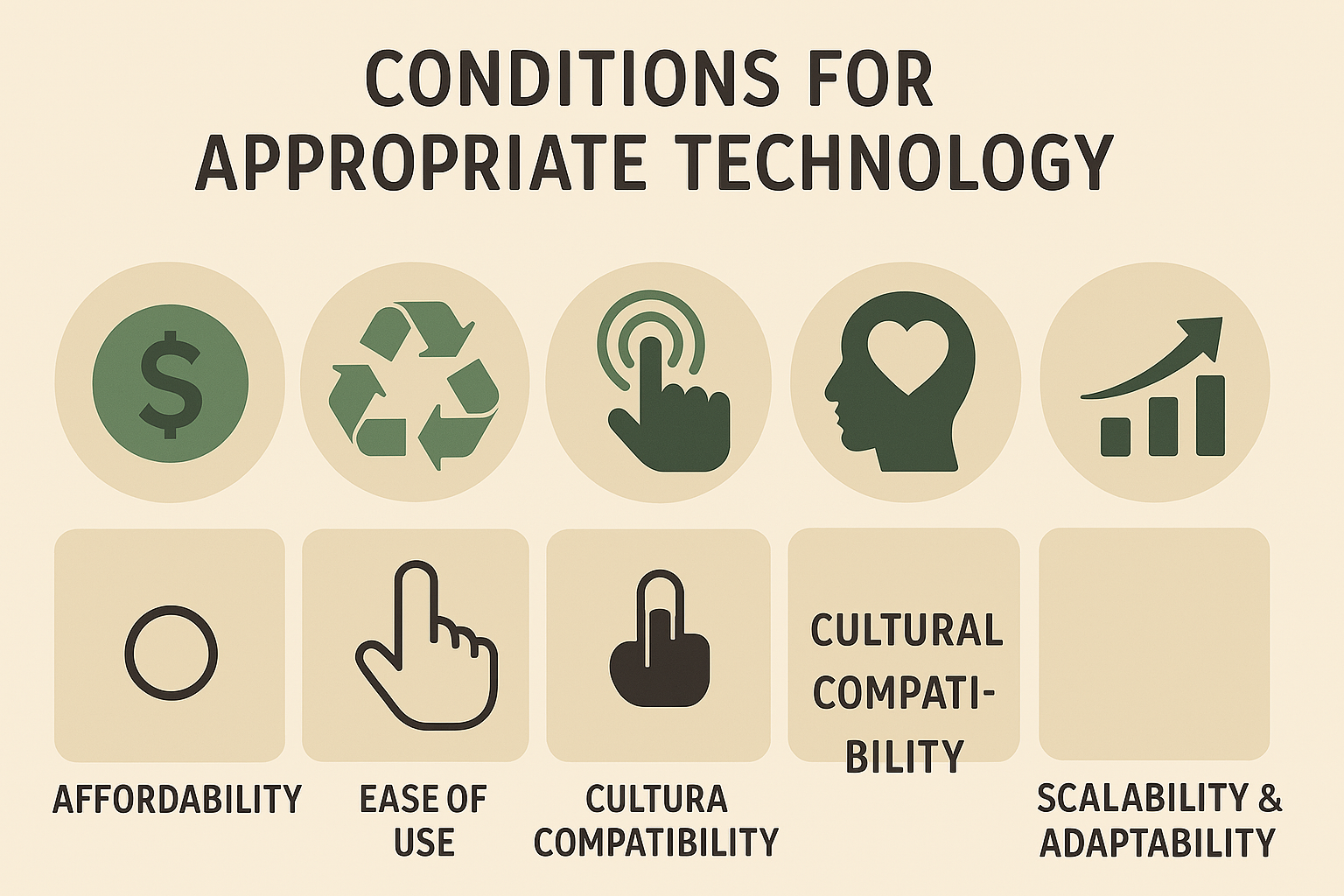The concept of appropriate technology emerged prominently during the mid-20th century as a response to the realization that not all technological advancements necessarily benefit all societies in equal measure. Especially in developing countries, where resources, education levels, and social structures differ markedly from industrialized nations, the need for technology that is sustainable, accessible, and contextually relevant becomes paramount. Appropriate technology refers to technologies that are designed with consideration of the environmental, ethical, cultural, social, and economic dimensions of the community they are intended to serve. These technologies are typically small-scale, labor-intensive, energy-efficient, and locally manageable.
Here are five essential conditions that define whether a technology is appropriate:
- Economically Affordable and Locally Viable:
An appropriate technology must be affordable for the people or communities that will use it. This does not simply mean low cost, but also low maintenance, with minimal reliance on expensive or imported parts. It should be economically viable within the local context, requiring minimal financial burden and ideally using locally available materials. Affordability ensures wide adoption and long-term sustainability. - Environmentally Sustainable:
Environmental compatibility is central to the idea of appropriate technology. The technology must not deplete natural resources, pollute the environment, or disrupt local ecosystems. It should promote renewable energy, energy efficiency, waste minimization, and the sustainable use of materials. Technologies like biogas plants, solar cookers, and water harvesting systems are examples of environmentally appropriate technologies. - Socially and Culturally Acceptable:
A technology should align with the social values, cultural practices, and traditions of the community. Imposing unfamiliar or culturally insensitive technologies can result in rejection or misuse. Community involvement during the planning and implementation phases enhances acceptance and adaptation. For example, sanitation technologies must consider gender roles, privacy concerns, and taboos. - Technically Simple and Locally Manageable:
One of the defining features of appropriate technology is its simplicity and ease of use. It should be comprehensible to local users, maintainable using local skills, and repairable without needing complex machinery or expert technicians. This promotes community ownership and reduces dependency on external agencies. For instance, treadle pumps for irrigation or manual water filters are simple technologies that can be operated and repaired by local people. - Labor-Intensive and Employment Generating:
In many developing countries, unemployment or underemployment is a critical issue. Appropriate technology should ideally be labor-intensive rather than capital-intensive, enabling the use of local human resources and skills. This not only provides employment but also fosters skill development and empowers the community economically. Technologies that support small-scale industries, rural crafts, or organic farming often fulfill this condition well.
These five conditions are interconnected and together ensure that a technology is not only suitable for a specific geographic or economic context but also contributes to the holistic development of a community. Unlike conventional industrial technologies which prioritize mass production, speed, and profit, appropriate technologies focus on equity, sustainability, and inclusivity. They are often best implemented through participatory models, where communities have a say in their development and adaptation, leading to greater success and ownership.
Examples like the use of solar lanterns in rural India, low-cost bamboo housing in flood-prone areas, and pedal-powered threshers in agriculture illustrate how appropriate technologies can transform lives when designed thoughtfully. Therefore, adopting appropriate technology is a cornerstone for achieving sustainable development and ensuring technological justice across the globe.








Leave a Reply